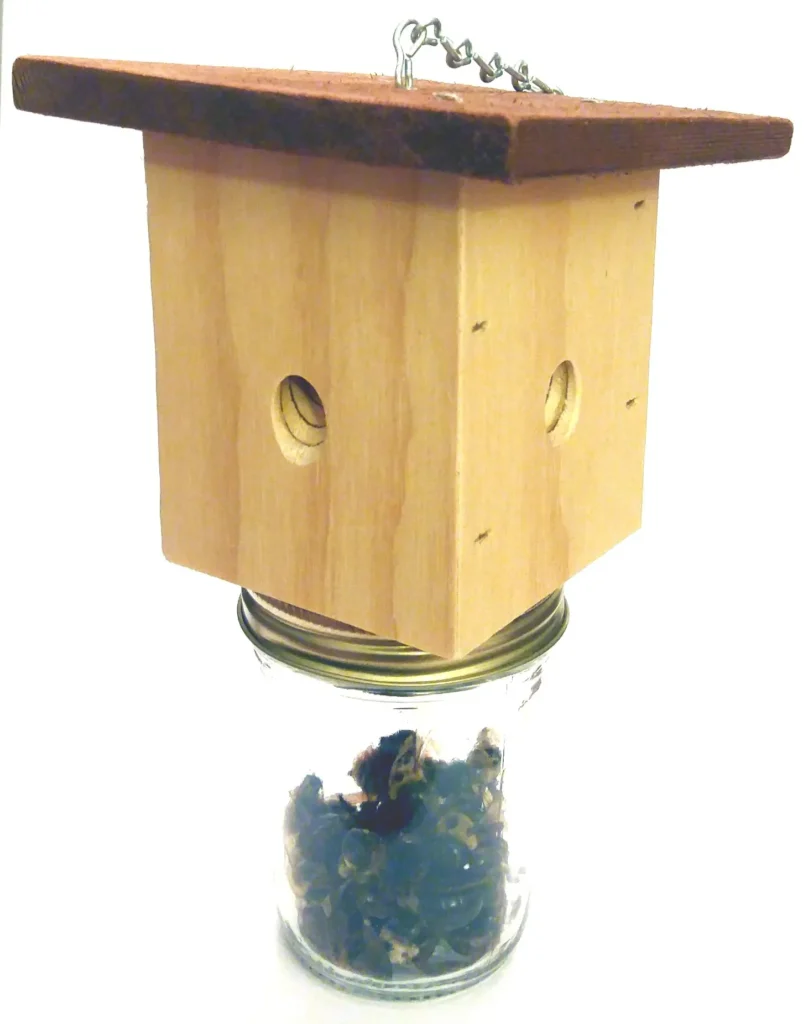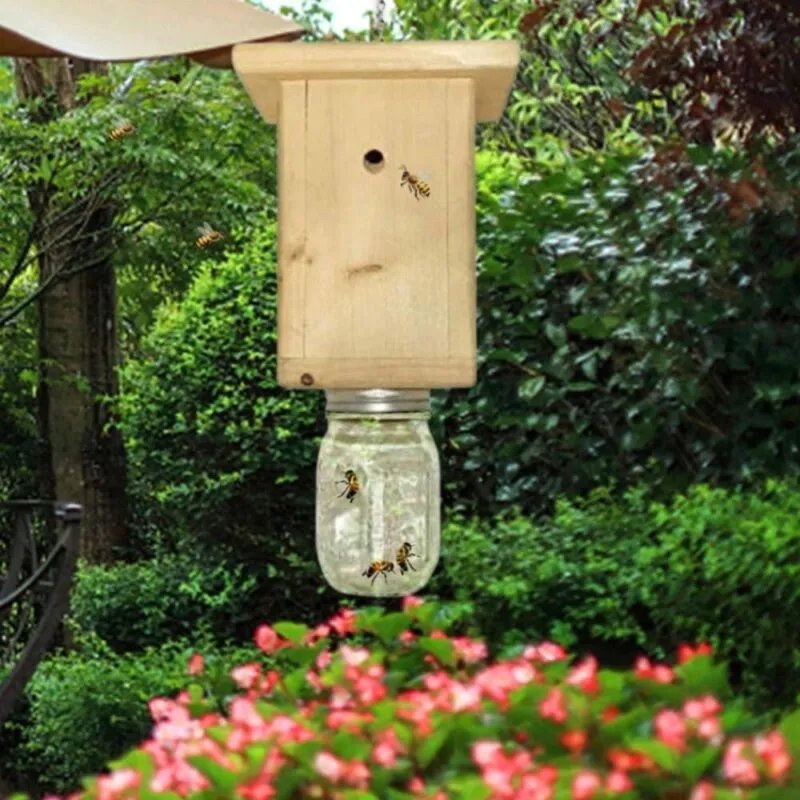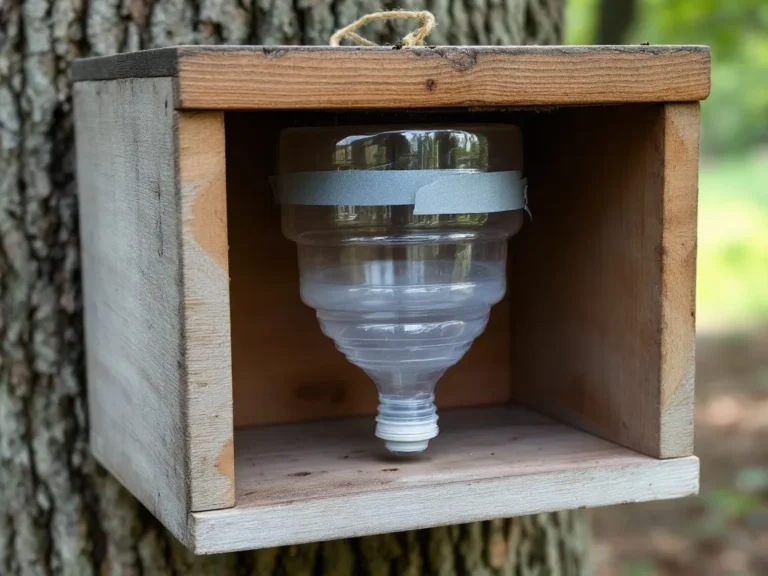Understanding the Importance of Carpenter Bee Traps
Carpenter bees, also known as wood bees, xylocopa bees, or borer bees, are often mistaken for bumblebees due to their similar appearance. However, unlike their bumblebee cousins, carpenter bees can cause significant damage to wooden structures by boring into them to create nesting tunnels. If left unchecked, these tunnels can weaken wooden beams, posts, and other structures, leading to costly repairs.
One of the most effective ways to protect your home from these destructive insects is by using a carpenter bee trap. In this comprehensive guide, we’ll explore everything you need to know about carpenter bee traps, including how they work, where to place them, and tips on how to attract borer bees to ensure your traps are effective.
What is a Carpenter Bee Trap?

A carpenter bee trap is a device designed to capture and contain wood bees to prevent them from boring into wooden structures. These traps are typically constructed from wood and mimic the natural nesting sites that carpenter bees prefer. By offering an attractive alternative to your home’s wood, these traps lure the bees inside, where they are then unable to escape.
Carpenter bee traps are a humane way to deal with a potential infestation, as they allow for the removal of the bees without the use of harmful chemicals. They are an essential tool for homeowners looking to protect their property from the damage that these persistent insects can cause.
How Does a Carpenter Bee Trap Work?
Carpenter bee traps work by taking advantage of the natural behaviors and preferences of xylocopa bees. These bees are drawn to wooden surfaces for nesting, particularly those that are unpainted or untreated. A carpenter bee trap simulates these conditions, making it an attractive target for the bees.
The trap typically consists of a wooden box with angled holes drilled into it. These holes mimic the entrance to a carpenter bee’s natural nest. When a bee enters the hole, it finds itself inside a narrow tunnel leading to a larger cavity, often fitted with a clear plastic container at the bottom. Once the bee enters this cavity, it becomes disoriented and is unable to find its way out, effectively trapping it inside.
What Attracts Carpenter Bees to Traps?
Understanding what attracts carpenter bees to traps is crucial for ensuring that your traps are effective. Carpenter bees are naturally attracted to certain types of wood, particularly those that are soft, untreated, or weathered. They prefer woods such as pine, cedar, or redwood, making these materials ideal for constructing a trap.
In addition to the type of wood used, the placement of the trap plays a significant role in attracting wood bees. Positioning the trap near existing nesting sites or areas where bees are already active increases the likelihood of capturing them. The presence of old nests or signs of damage can also draw bees to the trap, as they tend to revisit previously used nesting sites.
Where to Hang a Carpenter Bee Trap?
The location of your carpenter bee trap is key to its success. To effectively capture wood bees, you should hang the trap in areas where carpenter bees are most likely to be active. Common places include eaves, overhangs, wooden decks, and pergolas—essentially, any wooden structure that is exposed and at risk of infestation.
It’s recommended to hang the trap at least 7-10 feet off the ground, as this is the typical height where carpenter bees tend to bore into wood. Additionally, placing the trap on the sunny side of the structure can increase its effectiveness, as borer bees are more active in warmer areas.
How to Attract Carpenter Bees into the Trap?
While carpenter bee traps are designed to be naturally attractive to wood bees, there are a few additional strategies you can use to increase your chances of success. Here are some tips on how to attract carpenter bees into the trap:
- Use Wood that Bees Prefer: Ensure that your trap is made from the types of wood that carpenter bees find irresistible, such as pine or cedar.
- Place Near Existing Damage: If you have noticed carpenter bee activity around your property, place the trap near the damaged areas. Bees are likely to investigate new nesting sites in close proximity to their current location.
- Apply a Lure: Some homeowners have found success by applying a natural scent lure to the trap. This can be done using a piece of wood treated with bee pheromones or a bit of honey. However, this is usually not necessary if the trap is well-placed and constructed from the right materials.
- Early Season Placement: Hang your traps early in the spring, before the carpenter bees become active. This will increase the chances that bees looking for a new nest site will choose your trap instead of boring into your home.
How to Use a Carpenter Bee Trap?
Using a carpenter bee trap is straightforward, but there are a few best practices to keep in mind to maximize its effectiveness. Here’s a step-by-step guide on how to use a carpenter bee trap:
- Choose the Right Spot: As discussed, location is critical. Identify areas where carpenter bee activity is highest and hang the trap in these locations.
- Install the Trap Securely: Ensure the trap is securely fastened to prevent it from falling or being knocked down by wind or animals. A stable, elevated position is best.
- Monitor Regularly: Check the trap regularly to see if it has captured any bees. Once a bee is trapped, it will eventually die, and the trap can be emptied and reset.
- Clean and Reuse: After emptying the trap, clean it thoroughly and check for any damage. Carpenter bee traps are reusable, so proper maintenance will ensure they remain effective for multiple seasons.
- Relocate if Necessary: If the trap is not capturing any bees, try relocating it to another area where bees might be more active.
Resources: Tools and Guides for Carpenter Bee Control
For more information on carpenter bee traps and other pest control methods, here are some useful resources:
- BeeGoneTrap: A popular choice for effective and easy-to-use carpenter bee traps. Take a look
- Bee Control Services: Professional pest control services specializing in bee removal and prevention. Find Services
- Educational Videos: Watch tutorials on how to set up and maintain your carpenter bee traps. Watch Videos
FAQs: Common Questions About Carpenter Bee Traps
Q: What is the best time of year to use a carpenter bee trap? A: The best time to set up carpenter bee traps is early spring, before the bees start nesting. This ensures that you capture them before they can bore into your wood.
Q: Do I need any special tools to hang a carpenter bee trap? A: No special tools are needed. A ladder, some sturdy hooks, and screws are typically all you need to securely hang a carpenter bee trap.
Q: Can carpenter bee traps harm other insects? A: Carpenter bee traps are designed specifically for wood bees and are unlikely to harm other beneficial insects like honeybees or butterflies.
Q: How many traps should I use? A: The number of traps depends on the size of the area you’re protecting. For a typical home, 2-3 traps should suffice. If you have extensive wooden structures, consider adding more.
Q: How often should I check my traps? A: Check your traps every 1-2 weeks during peak carpenter bee activity to see if they need to be emptied or relocated.
Final thoughts:
Carpenter bee traps are an effective, chemical-free solution for protecting your wooden structures from the damage caused by wood bees. By understanding how these traps work and following best practices for placement and maintenance, you can safeguard your home and enjoy a pest-free environment.
Don’t wait until your home shows signs of damage—take proactive steps by setting up carpenter bee traps early in the season and ensuring they are positioned in high-activity areas. Your home and wallet will thank you!





